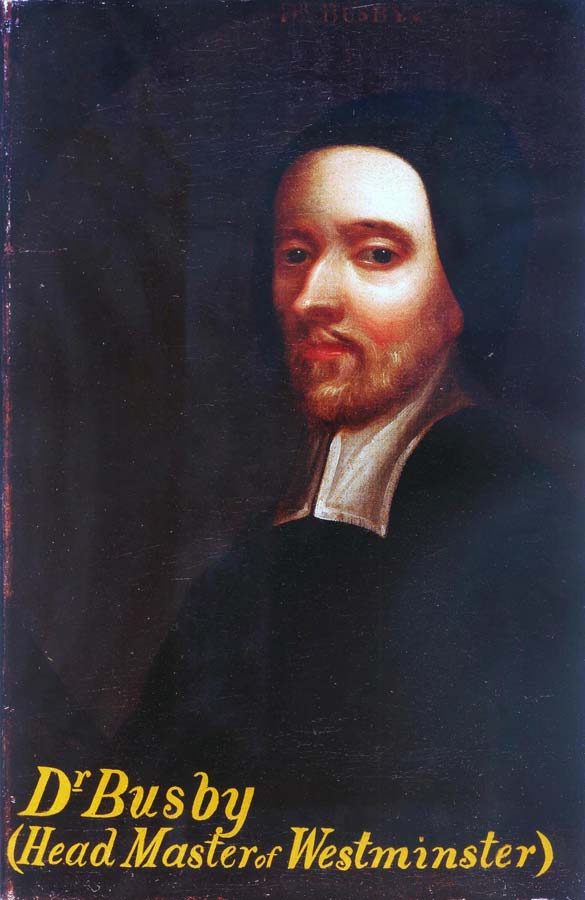William Camden, author and antiquary, was buried in the south transept of Westminster Abbey on 19th November 1623. Through the influence of Dean Gabriel Goodman he had been appointed Second Master at Westminster School in 1575 and he became Head Master 1593-97. He was also Librarian of Westminster Abbey 1587-1597, where many of his books are kept, and sang in the Choir 1584-1585. He was author of the first guidebook to the monuments in the Abbey, published in Latin in 1600.
His monument of white marble is on the west wall of the transept with a bust (unfortunately the inscription gives an incorrect age). He has his left hand on his famous book Britannia and in his right he holds some gloves. In the arcade behind is a gilded coronet (referring to his King of Arms office) and two shields of arms. The Latin inscription can be translated:
William Camden, Clarenceux King of Arms, who illustrated the British Antiquities, by ancient truth and indefatigable industry, and adorned his innate simplicity with useful literature, and illustrated his pleasantness of humour with candour and sincerity, lies here quietly, in hopes of a certain resurrection in Christ. He died 9 November 1623, aged 74.
The bust was damaged during the Civil War but the monument was restored by the University of Oxford in the late 18th century. The coats of arms show "argent, St George’s cross, on a chief gules a lion of England" (for Clarenceux King of Arms) impaling "argent a fess engrailed between six crosses crosslet fitchee sable" (for Camden).
His Life
William was born on 2nd May 1551 in London, son of Sampson, painter-stainer, and his wife Elizabeth (Curwen). He was educated at Christ's Hospital, St Paul’s school and Oxford university. At Oxford he was a friend of Philip Sidney. He met Ortelius, the Flemish geographer, through the mathematician John Dee. He was Ortelius' assistant in making a map of the Roman Empire. During his time at Westminster School he was able to travel extensively around the country during the holidays collecting antiquarian and topographical information. In 1586 his book Britannia (a description of Britain and Ireland) was published, which went into many editions.
One of his pupils was the Elizabethan poet Ben Jonson who wrote an affectionate epigram "Camden, most reverend head, to whom I owe All that I am in arts, all that I know, (How nothing's that) to whom my country owes, The great renowne, and name wherewith she goes...". Camden made many improvements at the school, with patronage from Lord Burghley. His Greek grammar became a standard work and his other major work was the Annals of the reign of Queen Elizabeth I.
Although a layman, William was appointed to the prebend of Ilfracombe at Salisbury Cathedral and in 1597 he was appointed Clarenceux King of Arms (one of the three principal officers or heralds at the College of Arms). He founded the first chair of history at an English university and with a group of friends established the Society of Antiquaries in London.
He died unmarried at his home at Chislehurst in Kent on 9th November 1623. His executor William Heather, the composer, was buried near him.
Further reading
"William Camden. A life in context" by Wyman Herendeen, 2007
There is a portrait of him at Westminster School.

© National Portrait Gallery, London [Creative Commons CC BY-NC-ND 3.0]

This image can be purchased from Westminster Abbey Library
Image © 2024 Dean and Chapter of Westminster










